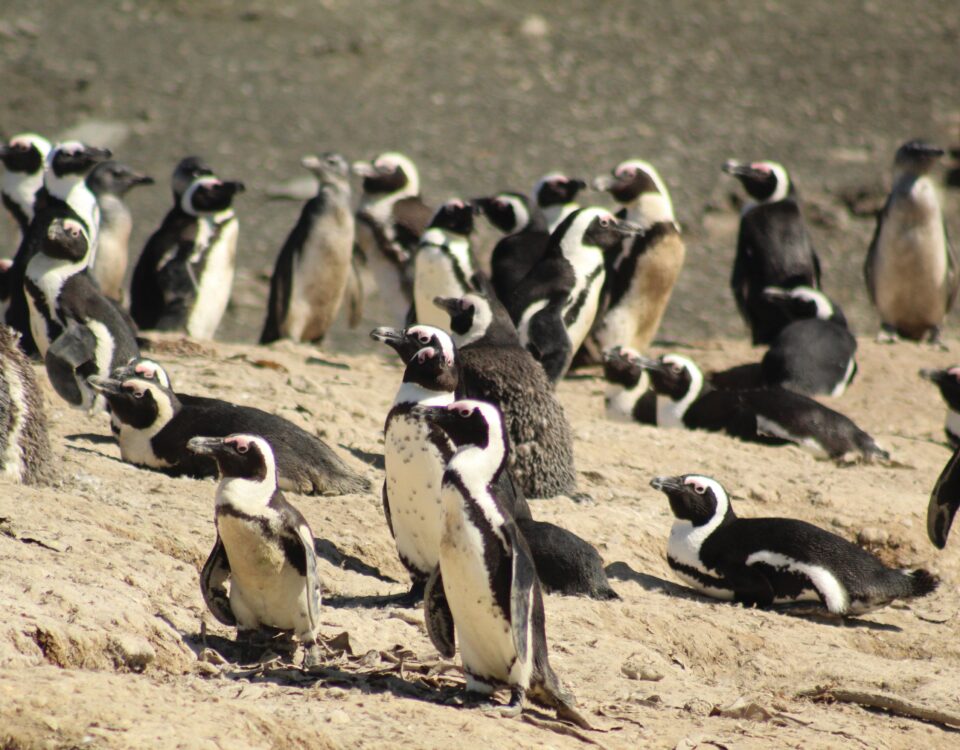Namibia’s ‘dry’ rivers attract international attention on water management
July 12, 2012Mashi Crafts: Weaving more than palm leaves into peoples lives
July 12, 2012By Mary Seely, Desert Research Foundation of Namibia
Although many may never have heard of him, Lars Karlsson is revered in Namibia’s inner environmental circles. He spent eight years as a Swedish International Development Authority (Sida) representative, focusing on transport. His environmental portfolio was a relatively minor one, but one which provided a source of great interest and fulfilment for Lars. Perhaps it was all the individualistic environmentalists he had to deal with or the interesting places they took him to, but it was also his love for the Namibian environment that contributed to this satisfaction.
During Lars’s time in Namibia he supported a wide variety of environmental projects and took a hands-on approach in these diverse fields. One of the first major projects he supported was the conversion of an Environmental Assessment of the Ogongo-Oshakati Canal into a popular book, providing a first synthesis of environmental information about the Cuvelai Delta in Namibia. The book: Oshanas: Sustaining people environment and development in Central Owambo, Namibia, at Lars’s initiation, was then abridged and translated into Oshiwambo, so that facing pages were in English or Oshiwambo, thus contributing to language as well as to environmental education for people living in this incredible inland delta of central northern Namibia.
Soon after he encouraged the compilation of Ephemeral rivers and their catchments: sustaining people and development in western Namibia, which was published as a book and interpreted as a video with the information presented on a topographic map – all with Lars’s visionary inputs. To encourage the environmentalists to ‘put their money where their mouth is’, Lars organised a horse safari down one of these ephemeral river courses, although several of us environmentalists, including Lars, left the Aba-Huab catchment not exactly in the way we had planned. Being on a roll, he then co-ordinated the SADC-wide book on Sharing Water in southern Africa, which saw a visit to Southern Africa of the foremost water expert from Sweden and a reverse trip of about six Namibians to gain experience about innovative water and sanitation management in Sweden.
An environmental project that simply germinated and grew was perhaps one of Lars’s favourite environmental endeavours. The first year some support was given to six University of Namibia students working with the Desert Research Foundation of Namibia to prepare a rainfall range map of Namibia. This map, showing the range of expected rainfall in various parts of Namibia, was designed to help people think about rainfall variability and to avoid their fixation on ‘average’ rainfall, which is never really experienced. This was adopted by the Namibian Agricultural Union, reprinted and distributed to all their member farmers. This became the first Summer Desertification Project, or SDP1, that went on for 13 years and involved over 150 students from UNAM, the Polytechnic of Namibia and the various colleges of agriculture.
During its extended duration, only possible with Lars’s inputs, SDPs addressed such topical environmental issues as ‘resettlement options for western Bushmanland’ (at the request of the Ministry of Lands, Resettlement and Rehabilitation), an assessment of the impact of small farm dams on Kuiseb River flow or an assessment of the potential of the Etaka Canal to provide water for livestock in the Cuvelai area – both with support from the Division of Hydrology, Department of Water Affairs and Forestry. With Lars’s prodding, these projects were all concluded by the students reporting back to high-level decision-makers, usually at the Gobabeb Centre.
Lars has made a permanent impact on the environmental sector in Namibia. Many young professionals, organisations and government departments owe their introduction into this sector to Lars. He was once heard to say that he felt the effectiveness of the limited environmental funding might have had a greater impact than some of the other Sida projects. Many environmentalists in Namibia would agree with him whole-heartedly.
This article appeared in the 2008/9 edition of Conservation and the Environment in Namibia.

